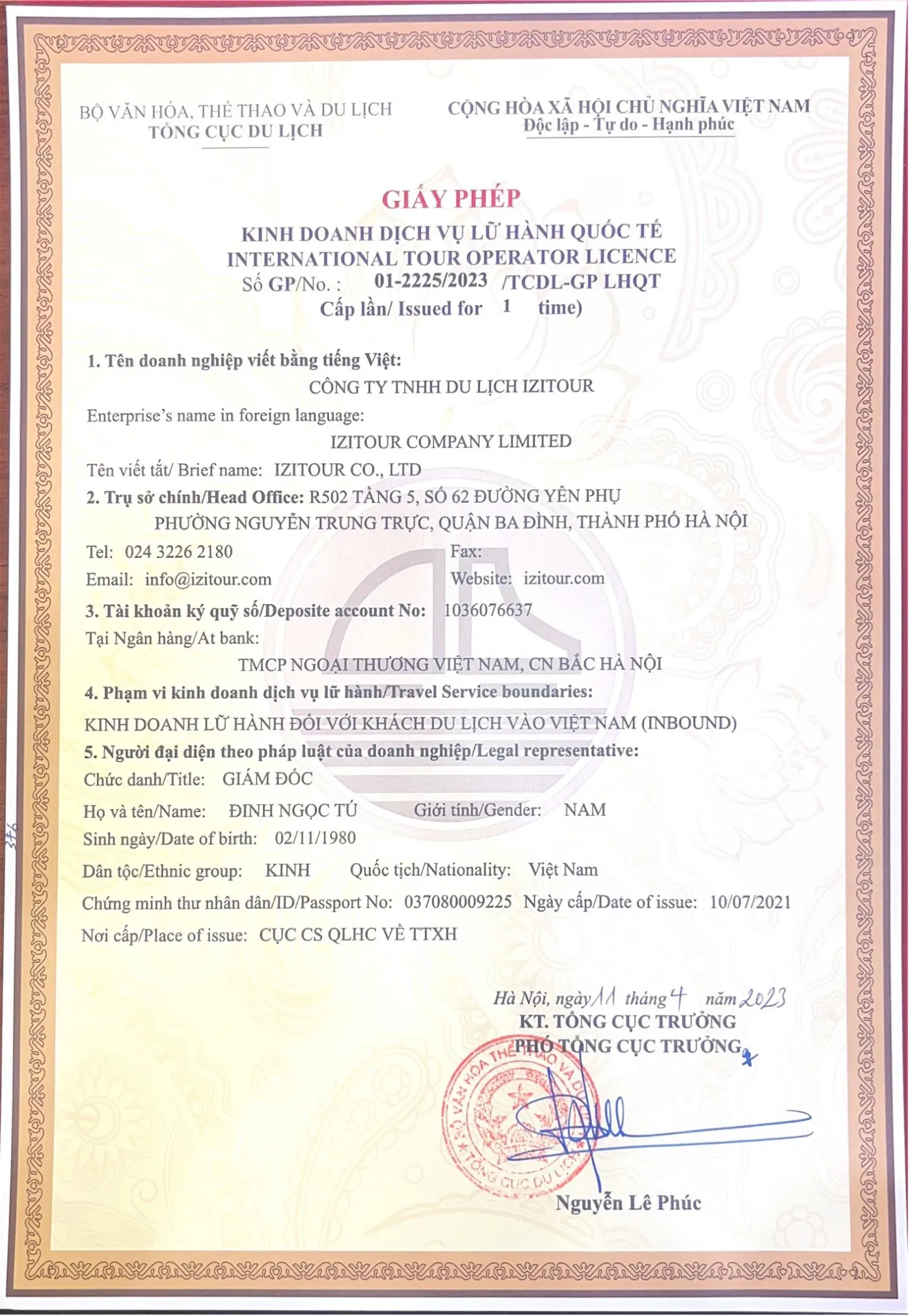Hoi An, literally "the place of peaceful meeting," admirably lives up to its name. While the ancient town captivates with its old architecture and colorful lanterns, it is in its surrounding rice paddies that one truly grasps the essence of Vietnamese serenity. Between sky and earth, the Hoi An rice paddies unfold their silent poetry, offering travelers a timeless moment.
Just a few kilometers from the bustling streets of Hoi An, the landscapes change. Where the bustle gives way to the birdsong and the rustling of wind through the rice stalks, the paddy fields stretch as far as the eye can see, bathed in golden light or azure reflections. True living paintings, they embody both the raw beauty of nature and the humility of human labor. Exploring the rice fields of Hoi An is like stepping into a timeless interlude: cycling along shaded dikes, strolling under the soft light of dawn, or sharing a special moment with the working farmers. Through this article, we invite you to delve into this soothing countryside, discovering the traditional rice cultivation of central Vietnam.
1. Why visit the Hoi An rice paddies?
For many, Hoi An is simply the most beautiful city in Vietnam. Every day, hundreds of travelers arrive and depart, drawn by the unique charm of this small ancient town, illuminated by lanterns and lulled by the gentle Thu Bon River. This constant flow infuses it with a vibrant energy, a soul that animates its alleys lined with yellow houses, art galleries, and quiet little cafes.
"Hoi An is too touristy, certainly... for those seeking authenticity... but still worth it. Its unique charm outweighs the crowds," some visitors confide.
So why choose between the liveliness of the old town and the peace of the surrounding nature. When you can simply experience both? It is just a short bike ride from the city center that another Hoi An begins – rural, verdant, and profoundly soothing. Where the lanterns give way to rice stalks dancing in the rhythm of the wind, another adventure begins: that of the rice paddies of Hoi An.
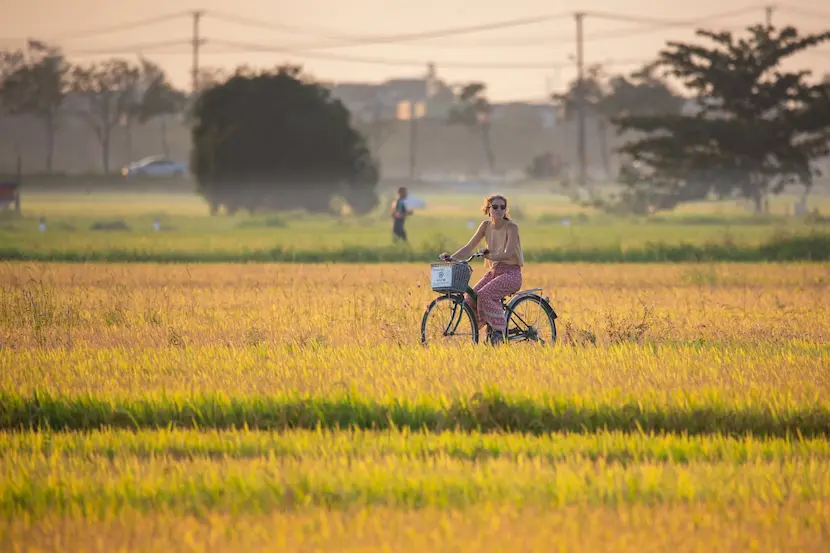
An immersion in Vietnamese rural life
On the narrow paths bordered by water and greenery, you encounter figures bent under their nón lá (conical hats), cultivating rice with ancestral know-how. Each gesture is slow, precise, almost choreographed – patiently passed down from generation to generation.
Unlike the spectacular terraced rice fields of the North, clinging to the mountainsides and shaped by ethnic minorities, the Hoi An rice paddies stretch out flat, meeting the horizon, in perfect harmony with the gentleness of the central Vietnamese countryside. Here, the landscape blends into daily life. Observing this scene is like plunging into the deep soul of Vietnam, where people still live to the rhythm of the earth, the sun, and the seasonal rains. A disarming simplicity that touches the heart.
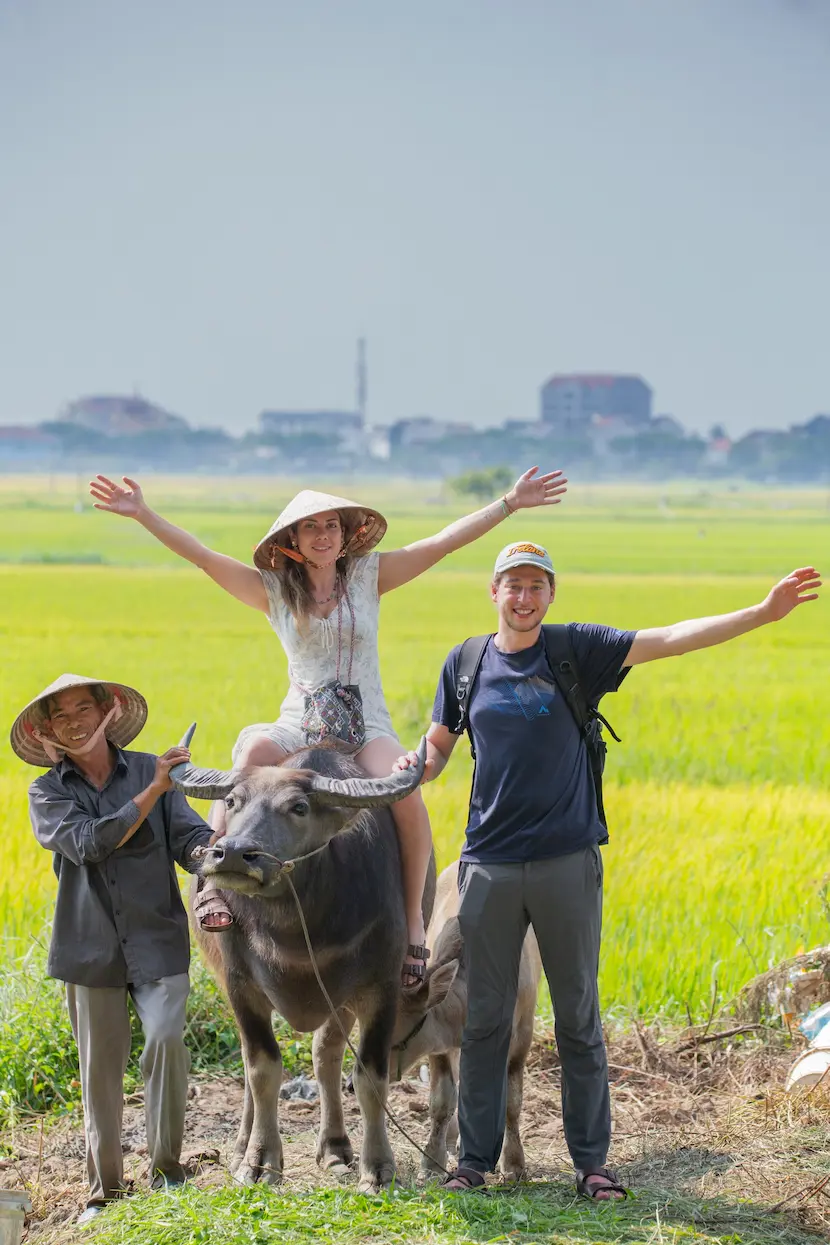
A landscape of silk and light, just steps from the city
Seen from the sky, the rice paddies of Hoi An form a patchwork of natural colors, like a vast fabric embroidered by the earth and the seasons. Each rice plot has its own hue – bright green, golden yellow, dark brown, or shimmering with water – and the whole creates a living agricultural mosaic, where each shade tells a stage of the farming cycle.
But beyond the aesthetics, this landscape is also a haven of absolute calm, nestled just steps from the bustle of the old town. Here, no honking horns, no hurried crowds. Only the discreet song of birds, the rustling of wind in the leaves, and sometimes, the heavy step of a buffalo pulling a plow. It is in this vibrant silence that one feels, perhaps more than anywhere else, the rural serenity of Vietnam, offered to all who take the time to stop.
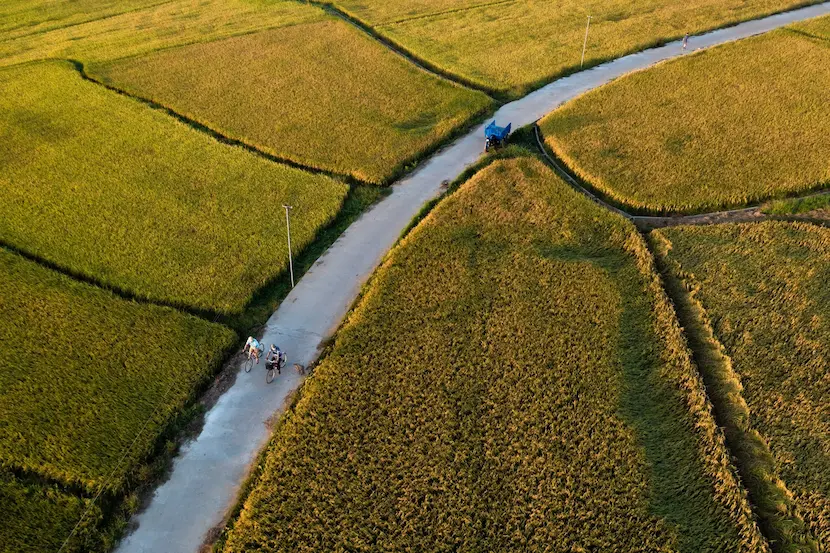
2. Where to admire most beautiful rice paddies of Hoi An?
Around Hoi An, several villages offer access to superb rice paddies, where nature, agriculture, and local life coexist harmoniously.
Cam Chau - Countryside just steps from the center
Located just 2 km from the historic center, Cam Chau is a district where rice paddies intertwine with vegetable gardens and traditional houses. Walking or cycling, you will discover scenes of authentic rural life, with farmers working in the fields and buffaloes grazing peacefully.
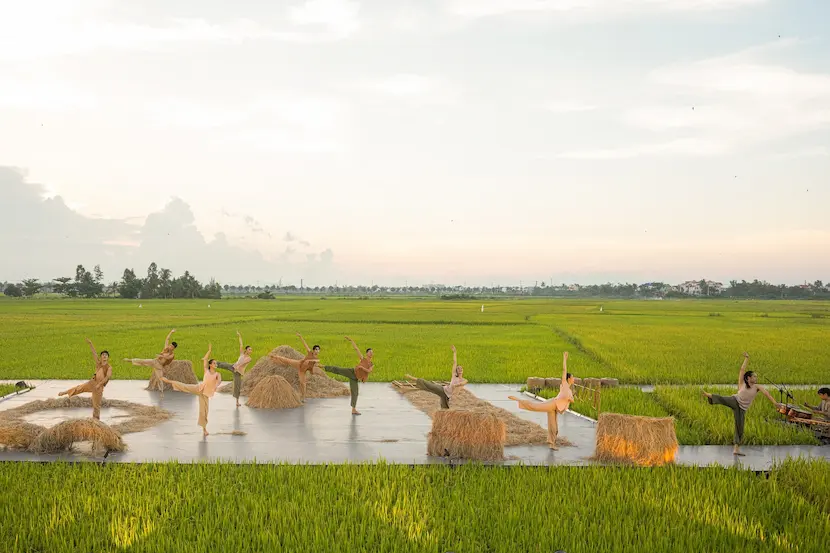
Cam Thanh - Between rice paddies and water palms
About 5 km from Hoi An, Cam Thanh is renowned for its lush rice paddies and its Bay Mau water palm forest. This village offers a unique experience where you can combine an exploration of the green rice fields and a round basket boat ride through the canals.
Tra Que - Between rice fields and aromatic herb garden
Located about 3 km from the old town, Tra Que village is best known for its aromatic herb gardens, but right next door, magnificent rice fields gently extend around the village. These rice paddies, well integrated into the local agricultural landscape, create a soothing contrast between the straight lines of the vegetable gardens and the supple undulations of the rice stalks swaying in the wind.
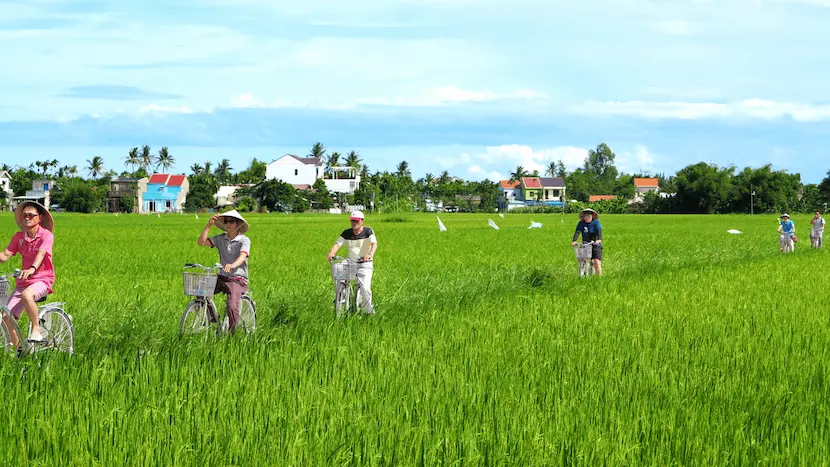
Cam Kim - Preserved authenticity
Crossing the Thu Bon River, you will reach Cam Kim, a village where rice paddies stretch as far as the eye can see. These areas are less frequented by tourists, offering a peaceful and authentic atmosphere. The bamboo-lined paths and the old abandoned brick kilns add to the rustic charm of these places.
3. What to do in the Hoi An rice paddies?
Far from the crowds and noise, the Hoi An rice paddies invite you to slow down, breathe, and reconnect with the essentials.
Explore by bicycle or on foot
Taking the small paths between the rice paddies by bike or on foot offers a breath of calm and greenery. Each turn reveals a countryside scene: a buffalo plowing, a farmer at work, or simply the wind playing in the rice stalks. At dawn or sunset, the low light transforms the landscape into a living painting, ideal for photography enthusiasts.
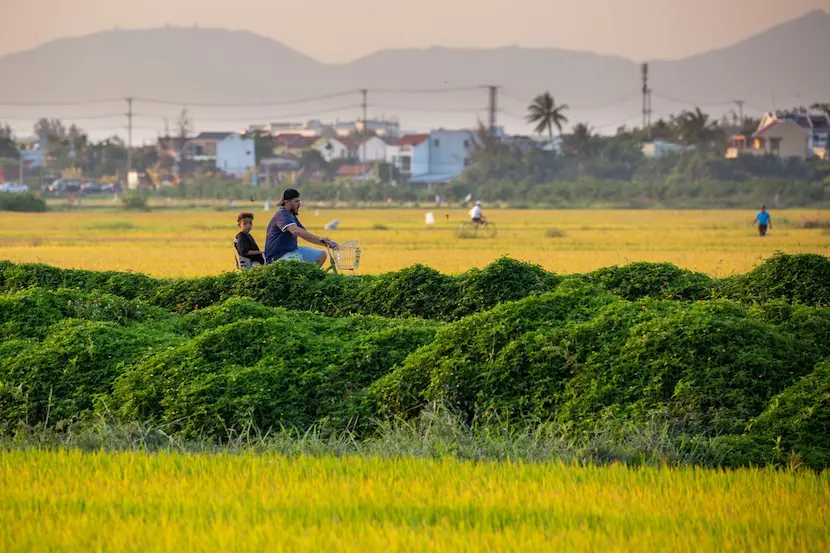
Settle down in a café among the rice paddies
After a stroll through the rice paddies, there's nothing like settling down in a country café to savor a moment of relaxation. Here are some must-visit addresses in Hoi An offering a breathtaking view of the rice fields:
- Roving Chillhouse Café (Cam Chau)
- Sabirama Garden Café (Cam Thanh)
- Lo Gach Cu Café (Duy Vinh)
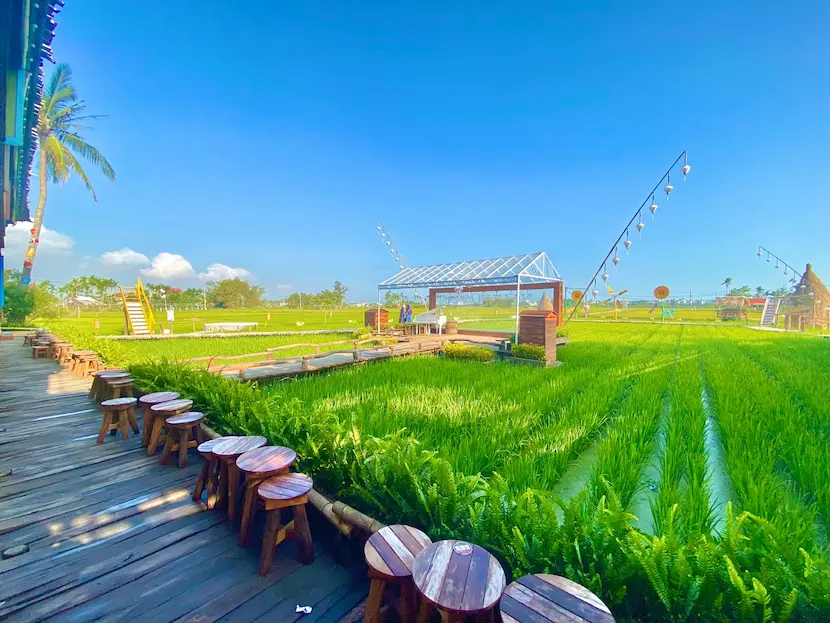
Share local life with the inhabitants
In Hoi An, the rice paddies are not just a picturesque backdrop; they are the beating heart of local life. For travelers seeking authenticity, participating in agricultural activities alongside the locals offers a unique immersion into Vietnamese rural daily life. From dawn, the farmers, wearing their traditional nón lá, busy themselves in the fields. Visitors are invited to join them to learn ancestral gestures: transplanting rice seedlings, irrigating the plots, or harvesting the ripe rice. These moments of sharing, simple but sincere, allow you to forge connections and better understand the deep relationship between people and the land.
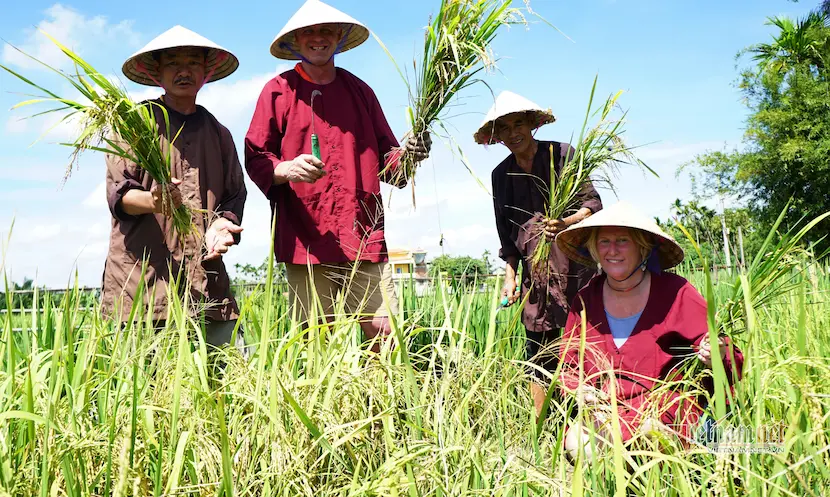
4. When to visit the Hoi An rice paddies?
As in many lowland regions of central Vietnam, Hoi An experiences two rice growing seasons per year.
- Winter-spring season:
Begins in late January or early February and culminates with the harvest between late April and early May. This is the most beautiful and spectacular time to admire the golden rice fields under the sun.
From February, young shoots begin to cover the fields with a tender and refreshing green. The atmosphere is peaceful, the climate still mild, perfect for cycling, observing the work in the fields, or capturing the freshness of the first leaves in the morning light.
For a few weeks from late April to mid-May, the Hoi An rice paddies reach their visual peak. The rice is ripe, the ears are bowed, and the landscape is tinged with a vibrant golden yellow, bathed in light. This is the best time to visit, whether to take photos, meet the farmers during the harvest, or simply contemplate the vibrant beauty of the Vietnamese countryside.
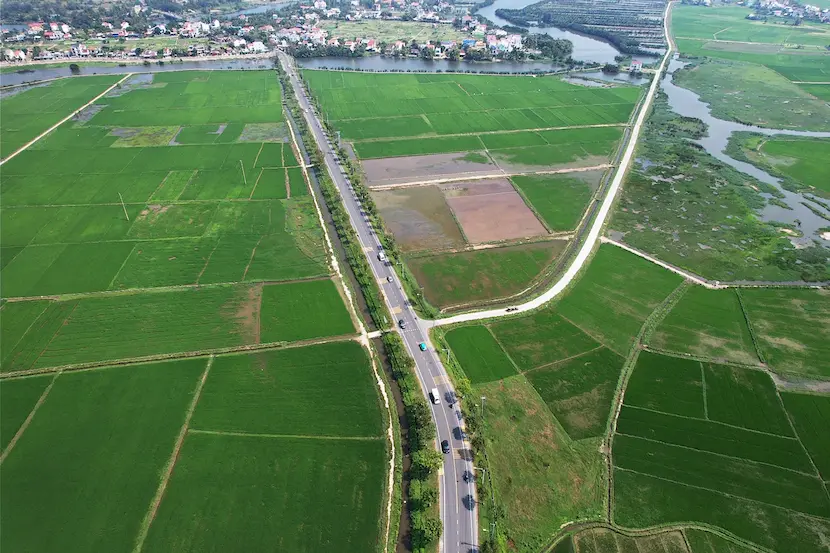
- Summer-autumn season:
Begins around June and ends between late September and October. In harvesting season, the rains, sometimes heavy, limit outdoor activities. However, for those seeking absolute calm, it is an opportunity to explore a rural, discreet, and authentic Hoi An, off the beaten track.
Best times of day to visit
- Early morning (5:30 AM – 7:00 AM): Soft light, light mist, calm atmosphere ideal for photography.
- Late afternoon (4:30 PM – 6:00 PM): Warm hues, reflections on the water or ears of rice, magical sunsets.
Far from the bustling alleys of the old town, the Hoi An rice paddies offer a completely different face: that of a peaceful, rooted, profoundly human Vietnam. Walking or cycling between the undulating rice paddies, greeting a farmer, watching the sky reflect in the water... everything here invites you to slow down and feel.
Visiting the rice paddies of Hoi An is also about rediscovering the connection between people and the land, in its purest form. An experience that goes beyond the landscape: it becomes a moment of reconnection, to oneself and to the essential.
Want to experience this differently? IZITOUR, a local travel agency, can help you create a tailor-made tour, perfectly suited to your desires. Don't wait any longer! Contact us now at [email protected] or leave a comment to start planning an exceptional trip to Vietnam.
See more:
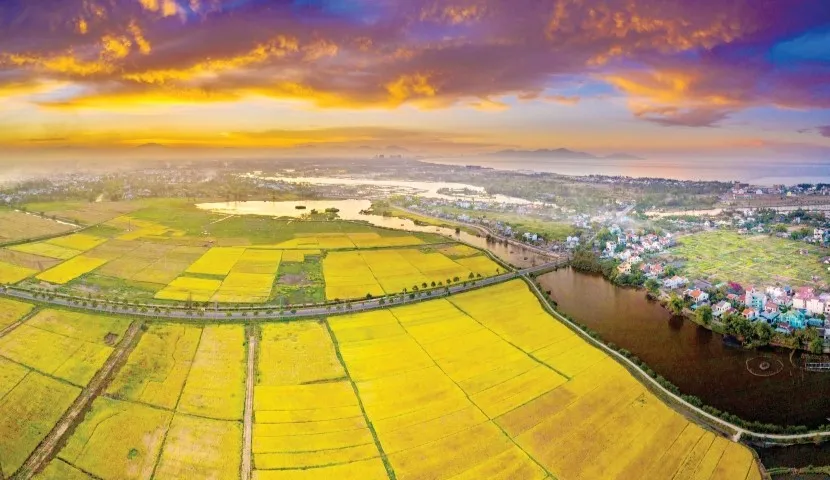







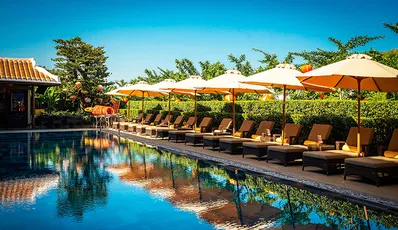
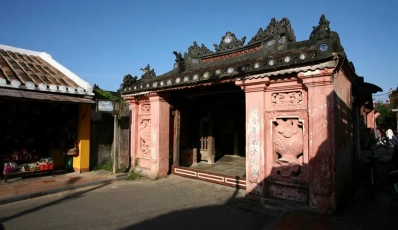
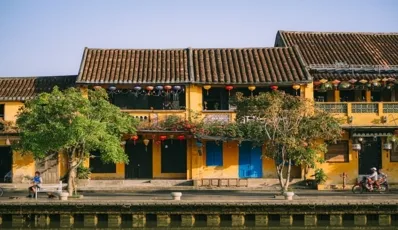
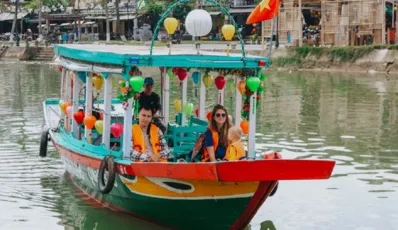

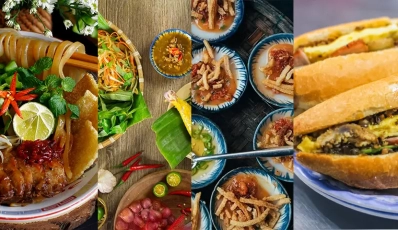
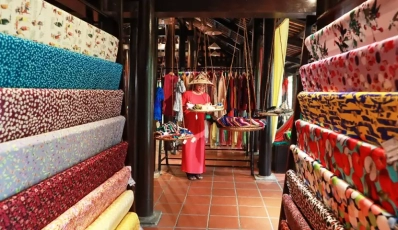
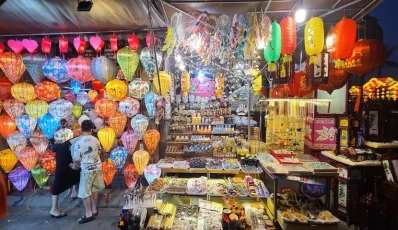
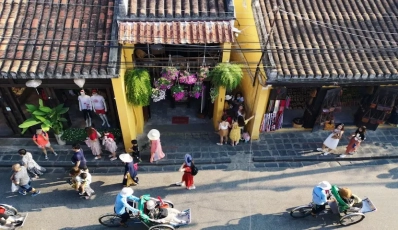
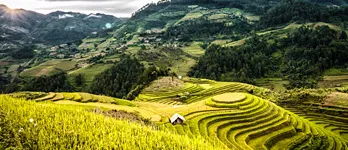
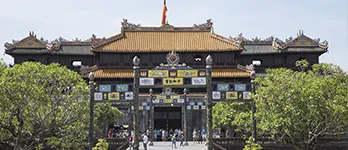
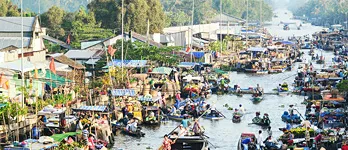

 TRAVELERS' CHOICE 2025
TRAVELERS' CHOICE 2025 